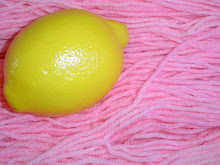Getting There
I’ve finished the body section of Alys and now I’m ready to start the sleeves! This photo shows why blocking is so important on a finished piece of knitwear. You can’t just weave in the ends and call it a day and expect it to look good. I’ve found that blocking is especially helpful when I have to sew pieces together to complete a sweater. Once it’s blocked, the edges stop curling (or at least curl less, depending on the fiber content) and they lie flat and smooth for me to seam them up.
In the case of this sweater, there won’t be any seams to sew up, but blocking will make the neckline and hem lie flat, and the front openings will stop rolling inwards. It will also make the whole thing look more finished. I’m looking forward to blocking this, but first, I need to do the sleeves. Also, I can’t wear it until it warms up a bit here - the roads are solid ice this morning!
In the case of this sweater, there won’t be any seams to sew up, but blocking will make the neckline and hem lie flat, and the front openings will stop rolling inwards. It will also make the whole thing look more finished. I’m looking forward to blocking this, but first, I need to do the sleeves. Also, I can’t wear it until it warms up a bit here - the roads are solid ice this morning!
Labels: Cardigans











0 Comments:
Post a Comment
<< Home